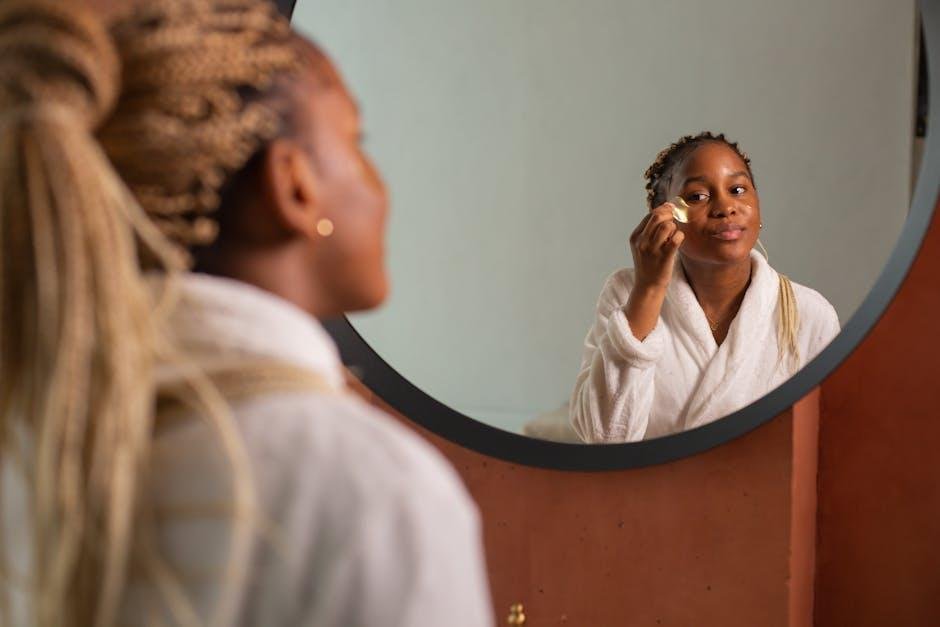In the ever-evolving world of skincare, two paradigms have emerged as frontrunners in the quest for radiant, healthy skin: K-Beauty, the innovative and meticulous practices of South Korea, and Western skincare, characterized by its straightforward, results-driven approach. As beauty enthusiasts globe-trot through serums and sheet masks, the question arises: what truly sets these two styles apart? is it their ingredients, their techniques, or perhaps the cultural philosophies that underpin them? In this article, we will embark on a journey to peel back the layers of K-beauty and Western skincare, illuminating the distinctive features that define each and exploring how these diverse practices can complement one another in our daily routines. Whether you’re a seasoned skincare aficionado or a curious newcomer, understanding these differing approaches may just unlock the secret to your best skin yet.
The Philosophy Behind K-Beauty and Western Skincare Approaches
At the heart of K-Beauty lies a deeply rooted philosophy centered on self-care and prevention. This approach prioritizes a meticulous skincare regimen that emphasizes the importance of layering products for optimal nourishment. Rather of focusing solely on immediate results, K-Beauty encourages a long-term commitment to maintaining skin health, reflecting a cultural belief in the seamless integration of beauty into daily life. The tenets of this philosophy manifest in practices such as:
- Hydration: A focus on moisture as the foundation of skin health.
- Gentleness: Emphasizing products with skin-pleasant ingredients.
- Customization: Tailoring routines to individual skin types and concerns.
In contrast, Western skincare frequently enough leans towards a reactive philosophy. Many Western consumers tend to seek immediate solutions to skin issues, gravitating towards products that promise swift results or target specific problems.This approach can sometiems oversimplify skincare into a problem-solution mindset. notable aspects of this philosophy include:
- Results-driven: Focusing on fast outcomes such as acne prevention or wrinkle reduction.
- Ingredient transparency: Increased scrutiny on product formulations and potential side effects.
- Minimalism: Favoring a streamlined routine that often prioritizes fewer products.

Ingredients That Make a Difference: Nature Meets Science
In the realm of beauty,the fusion of nature and science is a game-changer,especially within K-beauty. Formulations frequently enough highlight natural ingredients known for their efficacy and skin benefits, such as:
- Green Tea - Rich in antioxidants, it helps to soothe and protect the skin.
- Snail Mucin – Renowned for its regenerative properties, promoting healing and hydration.
- Fermented Ingredients – Enhance the absorption of nutrients and improve skin texture.
Conversely, Western skincare frequently leans towards synthesized components aimed at targeted results. Utilized ingredients include:
- Retinoids - Potent for anti-aging and acne treatment, they accelerate cell turnover.
- Hyaluronic Acid – Provides intense moisture, drawing water into the skin.
- Peptides – Help in collagen formation, promoting a youthful appearance.

Routine Rituals: Layering vs. Minimalism in Daily Skincare
K-Beauty enthusiasts frequently enough embrace elaborate routines that can include a multitude of steps, sometimes numbering anywhere from 10 to 15. This layering approach allows for a tailored regimen, where various products target specific skin concerns, promoting a sense of pampering and indulgence. the purposeful application of each product—from cleansers and toners to serums and moisturizers—creates a relationship between the user and their skincare. Common aspects of these rituals include:
- Hydration and nourishment: Multiple layers of moisture help maintain skin balance.
- Active ingredients: Products are chosen for their ability to work synergistically.
- Texture and feel: Textures, from gel to cream, are highlighted for a sensory skincare experience.
In contrast, Western skincare tends to prioritize minimalism, frequently enough advocating for a straightforward routine that focuses on the most essential products. This streamlined approach emphasizes efficacy and convenience, making it particularly appealing for those with busy lifestyles.A typical Western regimen might consist of just a few core products, which usually include:
- Cleanser: A single product to cleanse effectively.
- Moisturizer: To lock in hydration without overwhelming the skin.
- sunscreen: A vital step for daily protection against UV damage.
When it comes down to it, both approaches have their devoted followers, each offering distinct philosophies and catering to varying skincare needs.The choice between a layered routine or a minimalist approach ultimately reflects personal preferences, skin types, and lifestyle choices.

cultural Influences on Skincare Trends and Product Development
The intersection of culture and skincare has led to distinctive trends and product formulations in the K-beauty and Western skincare markets. K-beauty,rooted deeply in Korean traditions,emphasizes a holistic approach with an element of ritualistic application. This influence is driven by values surrounding self-care and the belief that skincare should be an enjoyable experience. Common features of K-beauty include:
- Layering techniques with multiple products
- Ingredient innovation, such as snail mucin and fermented extracts
- A strong focus on hydration and healthy skin barrier
In contrast, Western skincare often reflects a more clinical approach, with a focus on solving specific skin issues. This perspective is shaped by a fast-paced lifestyle and a pragmatic attitude towards beauty. Popular trends in western skincare include:
- Targeted treatments for acne and anti-aging
- Simplicity and efficiency in routines
- Emphasis on sustainability and clean beauty ingredients
| K-Beauty Characteristics | Western skincare Characteristics |
|---|---|
| Layered regimen | Targeted solutions |
| emphasis on hydration | Focus on treatment-specific products |
| Brightening and glow | Matte finish for oil control |
Key Takeaways
As we draw the curtain on this exploration of K-Beauty and Western skincare, we find ourselves at the intersection of tradition and innovation, culture and science. Each approach brings its unique philosophy, rituals, and offerings to the canvas of skincare. K-Beauty invites us to indulge in multi-step routines that prioritize hydration and preventative care, while Western skincare emphasizes targeted treatments and ingredient efficacy.
Ultimately, the best skincare regimen is one that resonates with your individual skin needs and personal preferences. The beauty of this dialog between K-Beauty and Western skincare lies in the opportunity to learn, experiment, and adapt. So whether you’re reaching for a hydrating essence from Seoul or a potent serum from New York,remember that the journey to healthy,glowing skin is as much about discovering what works for you as it is about embracing the rich tapestry of global beauty practices.
With each new product and technique, we continue to evolve our understanding of skincare. in a world where beauty knows no borders,let’s celebrate the diversity of approaches and keep the conversation going.After all, the quest for the perfect glow is universal, and every routine tells a story—a story that invites us to share, learn, and grow.



